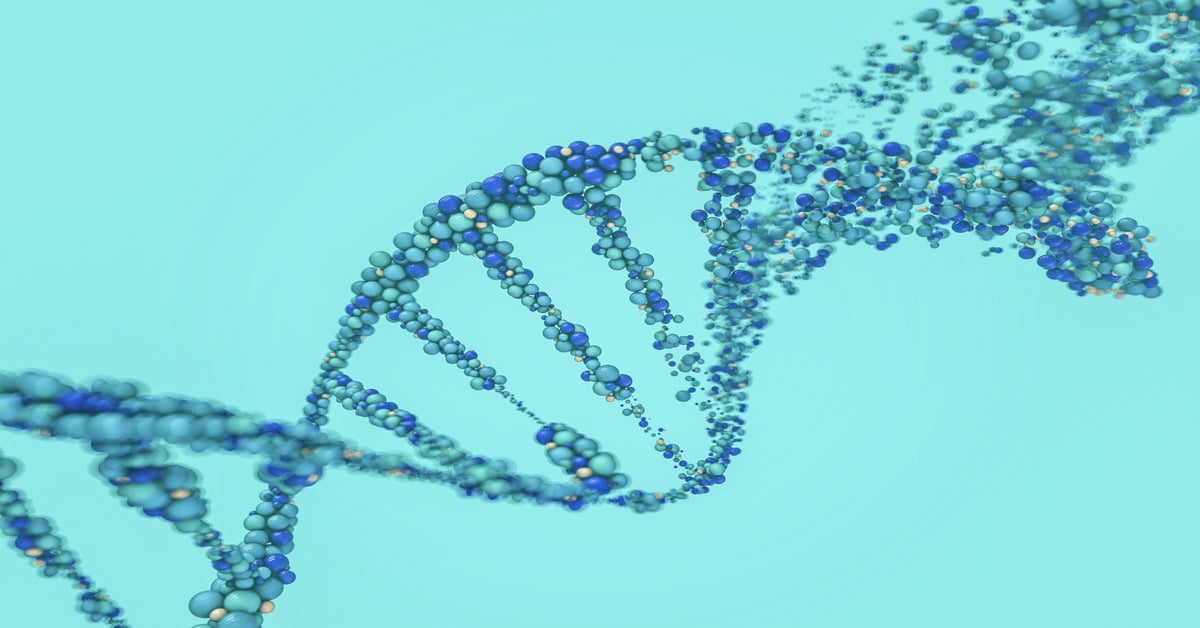

What is gene editing and how is it different from older-style GM and conventional breeding?
by Prof Michael Antoniou and Claire Robinson | Feb 25, 2024
Gene editing is a genetic modification procedure that (most often) begins with the creation of a break across the double strands of the DNA at a particular targeted location in the genome. The creation of a double-strand DNA break triggers DNA repair mechanisms which, depending on the gene editing experiment setup, can lead to genetic material being added, removed, or altered at this location.
It is the targeted nature of the double-strand DNA break and resulting genetic modification that gives rise to claims that gene editing is precise. The ability of gene editing to target the location of the modification contrasts with older GM techniques, where the GM gene(s) are inserted at locations in the genome in a semi-random fashion.
However, that is where gene editing’s precision ends. The break in the DNA is then mended by the cell’s own repair machinery. The DNA repair process following the creation of the double strand DNA break by the gene editing tool (such as CRISPR/Cas) is inherently imprecise. (See the added section below this article for an explanation of how the language used to describe gene editing has misled people regarding its supposed precision.)
On the one hand, the imprecision in DNA repair is exploited to destroy the function of a native gene, as intended. On the other hand, it can result in unintended DNA damage (mutations) at genomic locations other than the one being targeted (off-target mutations), as well as giving rise to unintended mutations at the intended edit site (on-target mutations).
These unintended mutations at both off-target and on-target sites range from large deletions, insertions, and rearrangements of DNA, including chromothripsis (a catastrophic shattering and random rejoining of a chromosomal region), and even loss of whole chromosomes. This will negatively impact the functioning of many genes – not just the gene(s) being targeted.
It is important to note that the unintended on- and off-target mutations from gene editing occur after the gene-editing tool has finished its task of bringing about a double-strand DNA break. This means that regardless of how “precisely” the initial double-strand DNA break is targeted, this undesired DNA damage will still take place, as they arise from the DNA repair process, over which the genetic engineer has little control.
Additional problems with gene editing of plants
The unintended DNA damage resulting from the action of the gene-editing tool is over and above the large-scale genome-wide DNA mutations that arise as an inherent part of the gene editing process as a whole, which involves the additional procedures of plant tissue culture and plant cell transformation. These gene editing process-induced mutations can number in their hundreds or thousands.
Crucially, the genome-wide gene editing process-induced mutations differ markedly in both quantity and quality from the genetic variation that arises from rounds of natural reproduction (conventional breeding).
First, experimental evidence shows that the unintended mutations arising from the gene editing process are several times greater in number than the genetic variations arising from several rounds of natural reproduction, as explained here.
Second, the quality of the mutations arising from the gene editing process is strikingly different from the genetic variations occurring from natural reproduction and even from random mutagenesis breeding. The gene editing process results in large-scale random genome-wide mutations. But in contrast, the genetic variation arising from natural reproduction (and even random mutagenesis breeding) is non-random, with certain regions of the genome being protected from mutations.
Furthermore, there is now evidence showing that the genetic variation that arises through natural reproduction of plants is targeted to certain gene regions in a directed evolutionary manner, to help the plant adapt to its environment.
The large-scale, random and non-random, on-target and off-target genome-wide mutations that inevitably arise from the gene editing process as a whole will result in a marked alteration in global patterns of gene expression. This in turn leads to altered biochemistry and composition, which can include the production of novel toxins and allergens.
The “foreign DNA” myth
It is often claimed that gene editing is equivalent to traditional breeding techniques, because the intended change does not involve the introduction of foreign DNA.
But this is false. Research shows that foreign DNA and even complete foreign genes can be, and are, introduced into the genome by gene editing techniques, both intentionally and inadvertently.
The “GM is natural” argument
Foreign genetic material has been found in rare cases to have been introduced into plants by natural events. This has led to claims that genetic modification is natural and nothing to worry about.
However, such events would have originally been rare and localised. And their results would have been selected for over evolutionary time. Any events that resulted in dangerous effects, such as toxicity or allergenicity, would have been spotted and selected out by farmers and crop breeders.
This is not the case with gene editing and other genetic modification techniques, which can result in large numbers of dangerous crops being widely planted and consumed across the globe in a relatively short space of time, with no possibility of tracing the cause of any ill effects due to the globalised nature of the food supply and (in some cases) a lack of GMO labelling.
GMO developers often claim that they will breed out the foreign DNA in subsequent cross-breeding steps. But it’s not possible to clean up foreign DNA from a genome when you don’t know it is there. And it’s clear that agricultural GMO developers are not looking properly for such effects. They use the wrong analytical tools, so it’s like looking for a lost set of keys in the dark without any form of night vision.
In addition, an analysis by Dr Yves Bertheau, former director of research at the French National Institute for Agricultural Research, shows that “cleanup” cross-breeding, where it is carried out, is limited by developers’ habits, expertise, and the available material. So in most cases, “genome cleaning” by backcrossing is not done thoroughly enough. As a result, unintended genetic damage can remain in the final marketed GMO, with potentially dangerous consequences.
Conclusions and recommendations
The science underpinning gene editing highlights that this technology is not as precise, predictable, and safe as advocates claim. On the contrary, the science shows that gene editing is different from natural breeding and that gene-edited products (plants and animals) pose risks to health and the environment that must be assessed on a case-by-case basis in a robust regulatory regime. So those who argue for deregulation (removal of safety checks, traceability, and labelling) of such products are not being true to the science.
The language of gene editing
In his book, The Mutant Project: Inside the Global Race to Genetically Modify Humans, the scholar Eben Kirksey explains how metaphors like gene editing, which suggest precision, in reality hide messy cellular dynamics. Kirksey says an armed drone attack gives a more accurate comparison. He writes:
“Gene ‘editing’ is not a particularly good metaphor for explaining the science of CRISPR. With the computer I can easily cut and paste text from one application to another, or make clean deletions – letter by letter, line by line. But CRISPR does not have these precise editorial functions. CRISPR is more like a tiny reaper drone that can produce targeted damage to DNA. Sometimes it makes a precision, missile strike, destroying the target. It can also produce serious collateral damage, like a drone attack that accidentally takes out a wedding party instead of the intended target. Scientists often accidentally blast away big chunks of DNA as they try to improve the code of life. CRISPR can also go astray when the pre-programmed coordinates are ambiguous, like a rogue drone that automatically strikes the friends, neighbours, and relatives of a suspected terrorist. CRISPR can persist in cells for weeks, bouncing around the chromosomes, producing damage to DNA over and over again, every time it finds a near match to the intended target.
“It is important to signal a sense of risk or need for caution in using CRISPR. Other metaphors – like genetic ‘surgery’ or DNA ‘hacking’ – have been proposed to replace the idea of ‘editing’. The idea of genetic surgery suggests that there can be a slip of the surgeon’s knife, creating an unintended injury. Each of these images – the targeted missile, the surgeon’s scalpel, the hacker’s code – offers a perspective on how CRISPR works, even while concealing messy cellular dynamics. In the absence of a perfect metaphor, ultimately, I think the technical language describes it best: CRISPR is an enzyme that produces targeted mutagenesis.
“In other words, CRISPR generates mutants.”




